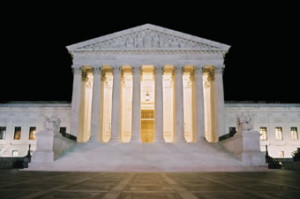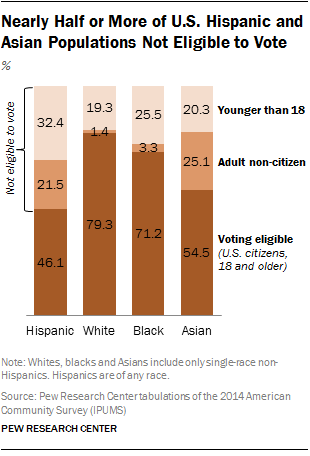The Supreme Court’s ruling in a case protected the rights of millions of Asian Americans to be represented in the halls of government.
The surprise unanimous decision (8-0) was a setback for conservatives who were trying to limit the influence of minority voters and Democrats. The court’s ruling said that when drawing up legislative districts for Congress, state legislators or even county and city districts, the total population should be counted, not just registered voters.
The ruling would mean millions of Asian Americans who are too young to vote or not yet citizens or who simply haven’t registered to vote, would still be represented by lawmakers. Just 55% of the more than 16 million Asians in the U.S. are adult citizens, according to a Pew report. By comparison, large majorities of whites (79%) and blacks (71%) are citizens of legal voting age.
“Everyone counts in our nation’s democratic process,” Christopher Kang, national director of the National Council of Asian Pacific Americans, said in a statement. “The lives of every individual in the United States — whether or not they are eligible to vote — are affected by government policies and therefore deserve representation.”
In affirming a lower court’s ruling in Evenwel v. Abbott, Justice Ruth Bader Ginsburg writing for the court said there was no reason to constitutionally require that voter eligibility, instead of the total number of residents, be used when drawing up legislative districts.
“Nonvoters have an important stake in many policy debates — children, their parents, even their grandparents, for example, have a stake in a strong public-education system — and in receiving constituent services, such as help navigating public-benefits bureaucracies,” Ginsburg wrote.
The case brought before the Supreme Court originated in Texas and was directed agains the Latino/American population there but districts in California, with large Asian populations, also would have been affected.
The plaintiffs in the case, both Republican officials, clearly were aiming to lessen the influence of Democrats. Of the 33 districts where voting-age citizens make up less than 60% of the population, 28 are held by Democrats; Democrats represent 18 of the lowest-ranking 20. On the other end, Republicans represent 35 of the 47 districts where 77% or more of the population are voting-age citizens, and 17 of the highest 20.
The High Court left open the door that if another way of redistricting other than using the voting rolls or total population could be found and pass legal muster, Monday’s ruling could be revisited.
(Ed Diokno writes a blog :Views From The Edge: news and analysis from an Asian American perspective.)
(AsAmNews is an all-volunteer effort of dedicated staff and interns. You can show your support by liking our Facebook page at www.facebook.com/asamnews, following us on Twitter and sharing our stories.)



